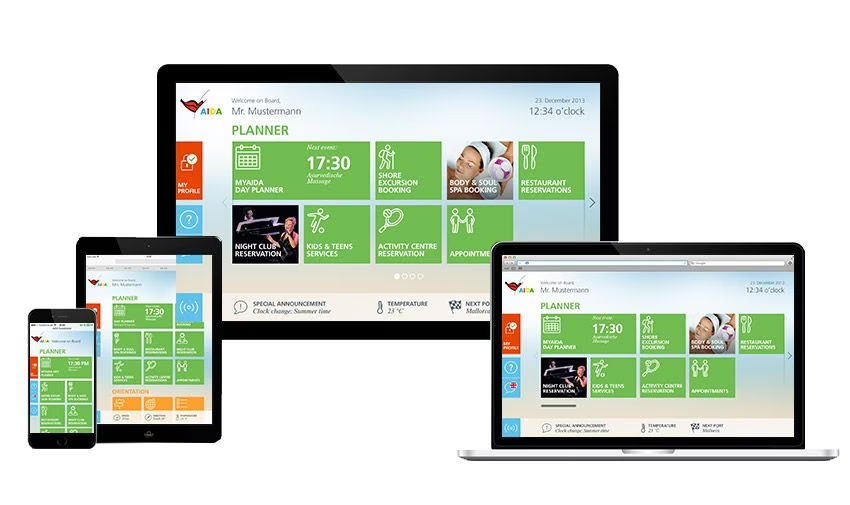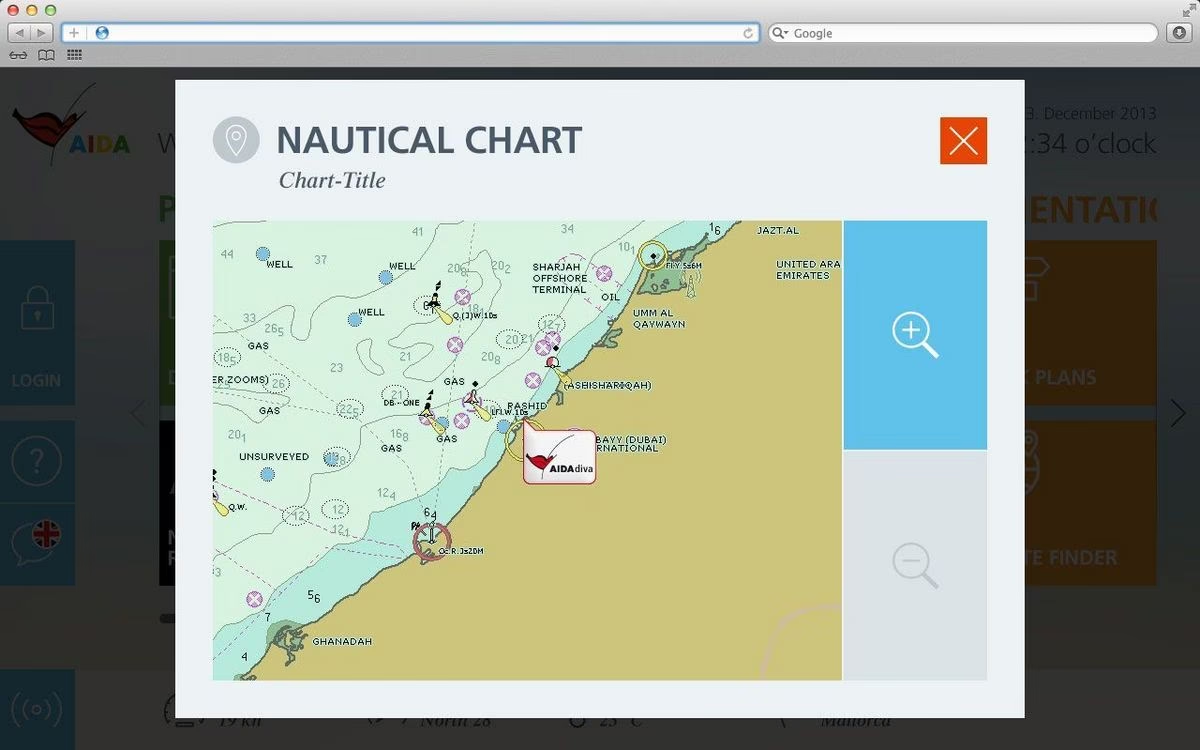AIDA Cruises is a brand of the cruise company Costa Crociere S.p.A. and is primarily aimed at the German-speaking market. The modern cruise fleet is set to grow to 16 ships by 2023. According to its own statements, the company has been the market leader in Germany for several years and employs around 15,000 people from 50 countries.
AIDA already had several systems in use to provide guests with various types of information. Together with kreuzwerker GmbH, we were commissioned to combine these various systems into a cross-device system and to add further functions. The aim was to create a fleet-wide AIDA on-board portal.
This was to have a wide range of functions: For example, passengers can find out about the current position of the ship, the weather or upcoming ports, reserve restaurant seats or book an excursion.
The on-board portal can be accessed on various devices on board: via a browser on the cabin TV, various public computers and terminals in all staircases and at reception and, of course, via devices guests bring with them, such as smartphones and tablets. In this way, AIDA reaches its guests across all channels with a standardised design and can generate additional sales through the current offers presented.
For the realisation of the AIDA on-board portal, we relied on the enterprise content management system TYPO3 for the editorial maintenance of the content. The special feature here is that the editors can link the content to itineraries and much of the content is automatically imported via on-board interfaces. This reduces the maintenance effort considerably.
Interfaces
The AIDA on-board portal had to be connected to a large number of third-party systems. Our partners at kreuzwerker developed an interface proxy for this purpose, which provides a standardised interface form to access the on-board systems. For example, the on-board portal has access to the system for managing guest data, booking excursions and reserving restaurant seats.
Deployment and Docker
Another special feature of this project is the deployment on our floating servers. These are usually located on the high seas and do not always have a stable internet connection. For bandwidth and security reasons, external developers are not allowed to access the ships' entertainment systems without special authorisation. Furthermore, in future there will be 12 floating live systems that need to be kept up to date. Not only the application itself, but also the server configuration must be the same in order to be able to manage such a project.
We have decided in favour of using Docker. With Docker, we can transfer complete images to the ships. The operation is so simple that the IT on board is able to install these updates independently.
Chrome App
The development of a Chrome app was new territory for us. This was primarily necessitated by RFID card readers, which have to be addressed via a serial interface. They are installed at the public terminals in the corridors and stairwells and allow guests to log into a personal area with their boarding card and, for example, check the current status of their boarding account.
- Booking of excursions, video on demand, satellite internet access, spa treatments, on-board activities
- Interactive deck plans
- Access also possible via devices you bring on board such as tablets, smartphones and laptops
- Development of a data storage provider for data synchronisation between the ships and the editorial team on land
Performance
A major issue with this web application was that it should not feel like one. The target: a response time of less than one second for each click. By minimising and optimising the code, we were able to do a lot to achieve this with the appropriate software.
For example, we play out device-dependent CSS files, as hover effects are not possible on mobile and other touch devices. This saves us a few bytes that the client doesn't have to process. We use Redis to cache key-value pairs. Varnish works on board as a reverse proxy for static files.
The high-performance NGINX is used as the web server. By using PHP 7 instead of PHP 5.6, a server response only takes 44.86% of the time in a load test. With all these measures, the response time was massively reduced and the target was met.
Device-specific presentation
Since the AIDA on-board portal should always be displayed optimally and as uniformly as possible across the various channels, we developed an open source TYPO3 extension that makes it possible to deliver resources and editorial content in a device-specific manner: Contexts. In particular, the low resolution of the smart TV devices in the cabins required a much larger display of the fonts and the omission of animations, which were present in the conventional responsive design.










